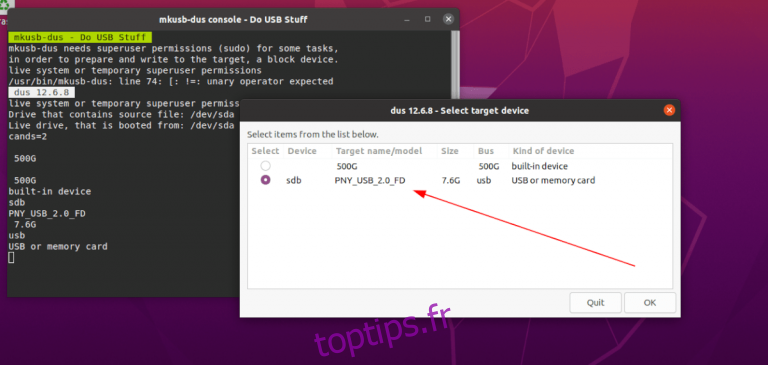
- #LIVE USB UBUNTU ON A MAC HOW TO#
- #LIVE USB UBUNTU ON A MAC ZIP FILE#
- #LIVE USB UBUNTU ON A MAC PRO#
- #LIVE USB UBUNTU ON A MAC ISO#
- #LIVE USB UBUNTU ON A MAC MAC#
#LIVE USB UBUNTU ON A MAC ISO#
In addition, it gives you the flexibility of burning ISO to physical disks or USB flash drives. The burn rate for UUByte ISO Editor is 100%, which means no wasted attempts. For the purpose of this piece, we’ll restrict ourselves to reviewing the burning capabilities of this versatile piece of code. It’s a lightweight application that’s powerful enough to handle all your ISO needs, including creating, editing, burning, copying and extracting. To create bootable media on USB in Windows and Mac, there’s nothing like UUByte ISO Editor. This article showcases three very powerful tools that are among the best bootable USB creation tools for Windows, Linux and Mac. But if you have the right tool, even a newbie can easily do it. Burning an ISO or DMG file to a disk is a delicate process that requires advanced knowledge of disk images, file systems, partition styles and so on. However, to create a bootable USB, you need the right tool. Anyone who works regularly with computers, whether Windows, Linux or Mac, at the system level will appreciate the convenience of pen drives over traditional physical disks. If you read this reference, you will realize the advantages of using macOS instead of Linux.Bootable USB drives are very popular because they’re convenient to carry around and can hold a lot more data than ever before. Note: When prompted, the default option was chosen.
#LIVE USB UBUNTU ON A MAC MAC#
Restart the Mac and immediately hold down the option key.Insert the flash drive in a USB port on the Mac.However, GParted did not recognize an external Thunderbolt 3 SSD. Using the above Macs, GParted was found to recognized the internal drives and USB external drives. You may need to use a wired keyboard and wired mouse. Note: I had access to an Apple wireless keyboard and an Apple wireless mouse. The result should be the folder shown below.Ī GParted flash drive was tested to successfully boot on the following computers with the latest firmware updates installed. Duplicate grub圆4.efi to produce grub圆4.efi copy, then rename grub圆4.efi copy to boot圆4.efi. The result should be the folder shown below. From a Finder window, open the EFI folder on the flash drive, then open the boot folder. Make the following changes to the names of the boot files, so the firmware in your Mac will boot directly from GRUB. Use the Finder application to copy the contents to the flash drive. Using the Finder application, open the folder named gparted-live-1. Use the Disk Utility application to erase a 500 MB or larger flash drive. I my case, this folder was named gparted-live-1.
#LIVE USB UBUNTU ON A MAC ZIP FILE#
After the download completes, the zip file will automatically convert to a folder. I assume this file will download to your Downloads folder. For example, if the latest version is 1.3.1-1, then you want the gparted-live-1.3.1-1-amd64.zip file. Note: The operating system used to create the bootable flash drive was macOS High Sierra Version 10.13.6.ĭownload the latest gparted-live-*-amd64.zip file.
#LIVE USB UBUNTU ON A MAC HOW TO#
How to Create a GParted Bootable Flash Drive Note: This answer does not require any third party tools or the use of the Terminal application.
#LIVE USB UBUNTU ON A MAC PRO#
Macbook Pro 17" Early 2011 that are not able at all to boot anything other from USB than OS X). This will bring up GParted Live.īut beware, there are some Macs (e.g. When booting the Mac now press alt and there should be an option to boot to that is called EFI boot. I put the German screenshot in, I think it's pretty clear. OS X will show a dialog to Initialise., Ignore or Unmount the USB stick when it is put into the slot. Which do you want to use?įinally, sudo fdisk /dev/diskX will show Disk: /dev/disk1 geometry: 942/255/63

Sudo gdisk -l /dev/diskX will show this (aborting the question is possible with ctrl C): GPT fdisk (gdisk) version 1.0.1įound valid MBR and GPT. The USB stick then looks like this with diskutil list: /dev/disk1 You should not be using the s1 extensions: these are partitions on the disk, not the disk itself.

We use the r for raw in of=/dev/rdiskX to make the copy faster.



 0 kommentar(er)
0 kommentar(er)
